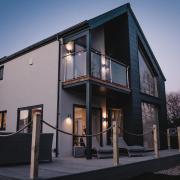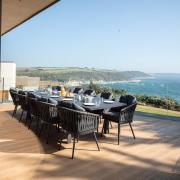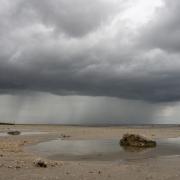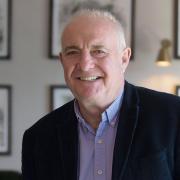Cornwall is not only #openforbusiness, it never closed, writes Malcolm Bell, head of tourism at Visit Cornwall, but where’s the screaming headlines in that?
I was recently reflecting on how the impact of images we all see in the media shape our perception and views of the world. This was brought to the forefront of my mind as a result of the impact on Cornwall of the January and February storms. As all of us who live here know, we do get storms and gales every winter and many of those storms we had recently were nothing that special.
There were however, two unusual aspects about the recent storms, the first was the number of storms - one after another - plus the fact that the two strongest storms coincided with high spring tides and big ground swell waves. It was this combination that caused damage to sea walls, harbours and sea front properties, as well as re-profiling many of our beaches - I am certainly not saying it wasn’t a wild time! However, within 24 hours of each storm abating, everyone one of us, and the vast majority of our businesses, were back to getting on with everyday life as usual. The second aspect was the impact of reporting of the storms, especially TV, wall-to-wall coverage and impressive imagery of the power of the sea. I realise that dramatic scenes of big waves crashing onto the coast, over harbour walls and spray carrying over rooftops is compelling viewing, especially combined with reporters trying to deliver television reports with the wind and rain driving into their faces.
However, coastal flood water does retreat with the tide and after a couple of hours the water had gone, so had the reporters, but the 24-hour news machine carried on replaying the most dramatic pictures over and over again. As if this was not exciting enough, the wall being washed away at Dawlish was heaven-sent to the media. I am sure we can all recall the pictures of the rail track swinging in mid air with every TV news crew there for hour after hour.
Those images at Dawlish instigated the story and the belief that Cornwall was cut off and that we were all living in a devastated region, where businesses were closed and we were spending all our time trying to recover. The truth was that the it was very hard to tell the difference between everyday life in January and February 2014 from any other year. We may have all been fed up to the back teeth with the rain and the winds, but that is just part of life living on the Atlantic edge.
The damage we did not expect, but should have, was that of perception versus reality – holiday bookings slowed or stopped and businesses suffered from customers and buyers cancelling business trips to Cornwall. The immediate response was tremendous, the doubling of the flights to and from London, increases in the coach and bus service to the rest of the country and the #openforbusiness message being shouted long and hard. Ministers, the Deputy Prime Minister and even the Prime Minister, came to visit to reinforce the message, but the recovery was slow and that is because the perception burnt onto the eyes of the rest of the country was storms, devastation and emotive comments. People believe their eyes rather than others telling them it is all OK.
So I have two thoughts – one is that next time you see reports on the TV news channels, constantly remind yourselves that you are only looking at part of the picture literally! I was taught from an early age to understand that our newspapers have different political leanings and to understand that the Daily Mail will have a different view of that of the Daily Mirror. Likewise, we all need to remind ourselves that although what we see is true, there may well be a wider-truth that we are not viewing and remember that our ‘perceptions are our reality’ but we can broaden that perception and bring it nearer to the truth by using the web, social media and blogs, to get a more rounded representative picture.



























